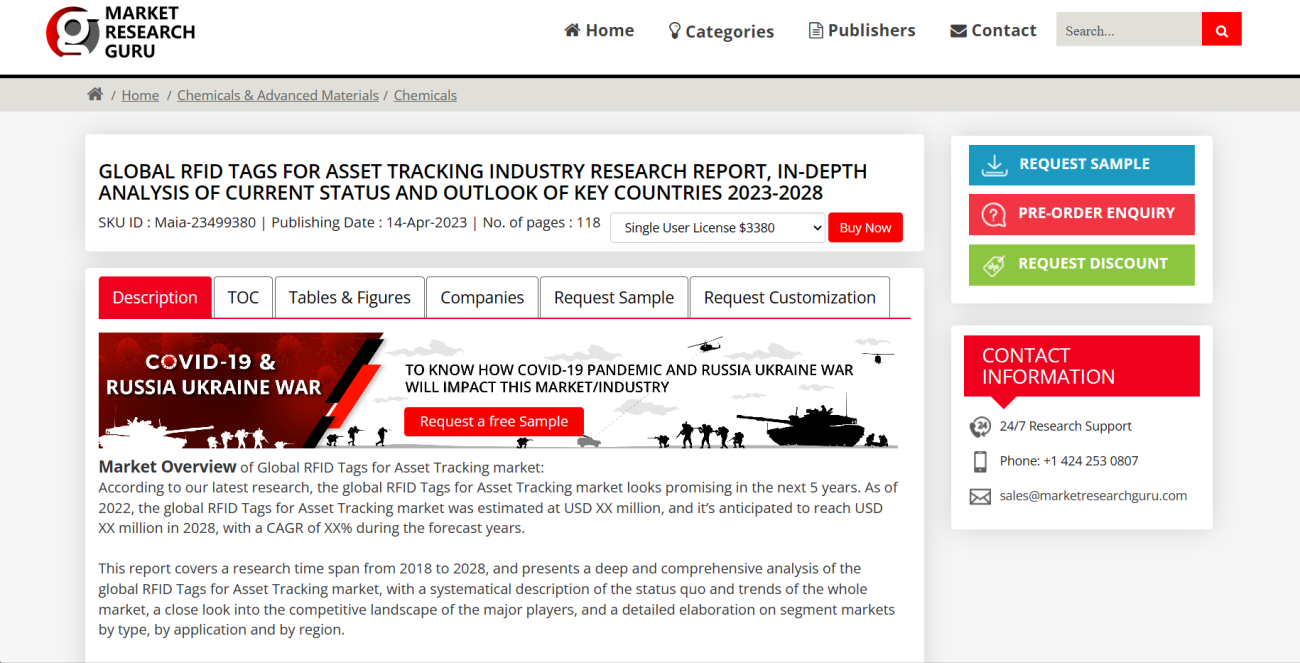
The global RFID Tags for Asset Tracking market is expected to witness substantial growth over the next five years, as indicated by recent research. Starting from an estimated value of 214.50 USD million in 2022, the market is projected to expand to USD 386.9 million by 2028, demonstrating a promising Compound Annual Growth Rate (CAGR) throughout the forecast period. This extensive report, covering the period from 2018 to 2028, provides a thorough analysis of the market’s trends, competitive landscape, and segment-specific insights.
The report delves into detailed market size estimations in terms of both value and sales volume from 2018 to 2028. It further explores the market’s trends and dynamics, shedding light on the key drivers propelling market growth, along with the opportunities, challenges, and potential risks that stakeholders may encounter. Additionally, the report examines the macroeconomic factors and regional conflicts, such as global inflation and the Russia-Ukraine War, and their potential impact on the RFID Tags for Asset Tracking market.
Segment-wise, the report offers a comprehensive breakdown of the market by type and application, providing insights into the market’s value and sales volume over the forecast period. Geographically, it presents an in-depth analysis of the market landscape across key regions, including North America, Asia Pacific, Europe, Latin America, Middle East, and Africa. Moreover, country-level studies offer revenue and sales volume data for major countries within each region, allowing for a nuanced understanding of regional market dynamics.
The competitive landscape of the RFID Tags for Asset Tracking market is also thoroughly examined, with detailed profiles of leading market players, such as American Barcode, CYBRA Corporation, GAO RFID, and Omni-ID, among others. The report analyzes their sales, revenue, product portfolios, and applications to provide a comprehensive view of the market’s competitive environment. Furthermore, the report delves into the trade flow, import-export volumes, and the industry’s value chain, encompassing raw material suppliers, manufacturing processes, distributors, and downstream customers.
In conclusion, this comprehensive report offers invaluable insights into the RFID Tags for Asset Tracking industry, catering to stakeholders at various stages of the value chain. With its detailed analyses, forecasts, and strategic insights, the report serves as a vital tool for informed decision-making and strategic planning in the evolving RFID Tags for Asset Tracking market landscape.
